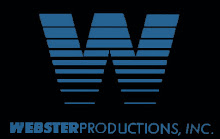From Hubspot:
Why should marketers care about HTML5? Many reasons, but a major reason is online video.
The Battle Over Online Video
While you may have heard of the battle television networks are having in monetizing their content online, that isn't the battle we are talking about. Online and user generated video is quickly becoming an important tool for marketers. A battle is currently happening in boardrooms in Silicon Valley that can have a profound impact on marketers planning to use video. With the recent launch of Apple's iPad the company made a decision to not support Adobe Flash. Flash is the technology that powers many of the videos and animations viewed on the web today. How will people watch web video on the iPad and the iPhone? HTML5.
One of HTML5's biggest impacts on marketers is its native video support. Do you know those pop menus that tell you that you need to update to a new version of Adobe Flash that appear sometimes when you try and watch a video online? That doesn't happen with HTML5 video. For marketers, this means that video becomes more ubiquitous. HTML5 makes video a native browser experience for users and publishers. It allows users to consume and publishers to distribute video without the need for browsers plugins. Major players in the TV and video industry like CBS, ABC, Vimeo, ESPN have already made changes to their sites to support video playback on the iPad, as well as other devices that do not support Flash and other video plugins.
One of HTML5's biggest impacts on marketers is its native video support. Do you know those pop menus that tell you that you need to update to a new version of Adobe Flash that appear sometimes when you try and watch a video online? That doesn't happen with HTML5 video. For marketers, this means that video becomes more ubiquitous. HTML5 makes video a native browser experience for users and publishers. It allows users to consume and publishers to distribute video without the need for browsers plugins. Major players in the TV and video industry like CBS, ABC, Vimeo, ESPN have already made changes to their sites to support video playback on the iPad, as well as other devices that do not support Flash and other video plugins.
HTML5 Gives Video More Marketing Muscle
HTML uses tags to classify different types of content on a web page. For the first time in HTML5, site owners have a "video" element which provides control for the way video is displayed, organized and searched. The "video" element eliminates the need for annoying browser-specific "object"





No comments:
Post a Comment